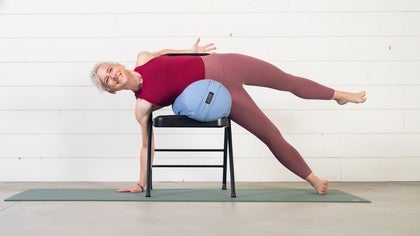
How to Keep Your New Year's Resolutions (Even if You've Already Failed)
I love fresh starts, resets, a dewy morning. I love the feeling of starting over, like anything is possible, an open road. A fresh start is an opportunity, and I can’t help but want to seize it.
I’m also a huge failure.
Research shows I’m not alone. Nearly 60% of us make resolutions each year; only about 8% succeed, and most fail by Jan 31st. According to YouGov, in 2019, 3 out of 10 people resolved to change something in 2020. The most popular goals are predictable: Among the Americans who made resolutions, the most common were exercising more (50%), saving money (49%), and losing weight (37%). While the data is still out on achievements, statistically speaking, most of us failed.
So why do we bother? It feels good, for one thing. And for another, behavioral science studies show it might actually be good for us. That fresh start feeling has a name: the Fresh Start Effect, and it commonly occurs after birthdays, the first of a month, and at the New Year.
A New Year is the ultimate fresh start, full of hope, steeped in potential. It’s said it’s the hope that kills you, but to paraphrase from my favorite TV coach Ted Lasso, it’s also the hope that keeps you going. So, from one overzealous resetter, eternal optimist, and chronic failure to another, here are a few things I’ve learned over the years - usually the hard way - to help turn the hope into practical and sustainable change.
Set your intentions
Yoga teachers commonly ask students to set an intention before practice begins. Intention setting brings focus, states your purpose. It’s an opportunity to ask, Why am I here?, What’s important? It might be a sentence, a word, a mental image - anything that inspires you or moves you to stay committed to your goals and help you stay in the moment.
In Sanskrit, mantra can be translated as meaning different things, but my favorite is "mind control". It’s the healthiest kind of brainwashing there is. My go-to is a combination of I am capable and I am resilient, and I repeat it often. If you’re having trouble remembering your purpose, or need a little internal guidance to make your resolutions last more than a few weeks, try distilling it down to one or two words, something you can repeat, breathe in and out, a word or idea you carry with you, like a modern day mantra, to help your goals become real.
Downsize, downsize, downsize
January is a huge month for gyms and yoga studios. We’re all geared up and ready to be transformed. I get it. But play the long game and start small. Working out or taking yoga class every day for 4 weeks might feel right for you. Or you might end up grumpy and sore with hundred of dollars of new stretch pants charged to your Amex. (Again, I get it. The kit is crucial!)
Doing something every day is difficult, especially if it’s new. Life is unpredictable. Downsizing offers a more sustainable path to reaching your goals. It also helps set expectations: Instead of declaring I’ll do yoga every day for 30 days, I’ll make an intention of moving a minimum of 30 minutes each day, whether it is yoga, running, strength training, or erratic dancing in my living room. These ‘resolution snacks’ are far more manageable, and far less pressure.
Systems can save you
I’m unorganized. My brain looks like my Google Chrome window - there are 483 open tabs. I’m practically a professional at procrastination and can easily let perfect get in the way of good. Any sliver of organization or system has been hard-won, fought for, clawed into.
One system that works for me is Ashtanga. To start, the sequence is predetermined, so there’s no mucking about wondering what postures to do. But even better, it simply does what any good system should: It helps me organize. It’s predictable, soothing, and when I’m in the middle feeling frustrated, I can see the end.
There’s always a good reason to stop, to quit, to not do. A system - whether it’s the buddy system, a productivity technique, or a simple spreadsheet - provides structure, discipline, and accountability. In other words, a reason to do. If one of your resolutions is movement based, figure out how long it takes to complete a sequence or miles, and start there. If you feel overwhelmed by the enormity of your goals, take a look at your plan, plot your next small move. Phone a friend. During practice, if I want to stop, the exit signs are marked, I know it’s possible. I usually don’t stop.
Data shows most people give up their resolutions the third week of January. The good news is it's never too late to get organized—trust me on that one.
Ritualize your routine
Living in New York City, being active is not usually a problem - on a normal day, I easily walk 4 miles. But walking isn’t always the intentional experience I want it to be; like so many other parts of my day, movement can easily become something I do without thinking. So I turned a regular habit - morning coffee - into a movement ritual. While the coffee brews, I light a candle, unroll my mat, and start moving. What began as a stiff, sleepy 10-minute routine has slowly turned into a beloved 30-minute ritual.
Whatever you’ve resolved, rituals give you time, provide stability, and build a personal narrative around your intention. Give yourself the gift of making whatever you’re trying to do special, sacred even. Drinking coffee is a habit; linking it with a dedicated space for movement makes it a ritual, something I do outside the purpose of the simple action of waking up. Put on your favorite music, use the nice tableware, light some sage. Ritual brings intention into focus, roots a habit in purpose, and perhaps most importantly, helps keep the routine.
Failure sucks, but it instructs
Experts say it takes at least 21 days to form a new habit, and up to 60 for it to really stick. It only takes one bite of ice cream to break a habit. Failure is humbling, painful, and inevitable. Some argue it helps us innovate, and others believe it leads to a higher rate of learning, resilience, and even success. No matter how you frame it, failure is where it gets interesting.
I failed at a handstand challenge, devised by me. I fail daily at mindfulness when I open my eyes and reach for my phone. Sometimes I skip the morning ritual and go straight to the coffee. I didn’t save enough money last year, I never drink enough water, I joined a book club and didn’t read the books. I’ve flunked a juice cleanse, a sugar fast, and Algebra II. (To name a few.) That Fresh Start Effect I love so much? More like Failure Express.
The Yamas and Niyamas, often thought of as the moral codes on the Eight Limbed Path of Yoga, lay out a series of philosophies on how to be in the world. One of them, satya, is about truthfulness. It is perhaps the most straightforward, the most easily translated, of the Yamas. The challenge lies in embodying truthfulness.
Take the sugar fast. A month long program that I failed by way of a single margarita, a beacon of false promises if there ever was one. When I started the fast, the line I used to sell it to myself was about resetting. It was a long, fun summer of late nights and big dinners. I need a 30-day reset, I justified, eyes wide with hope and sincerity. Truthfully, that summer had been fun but it had also been unstable, change loomed in the months ahead, the ground was shifting beneath me. I felt a momentum I didn’t understand and couldn’t control. Sugar was an easy target, something I could point to on a menu and say, No, not that.
Of course, I didn’t know any of this at the time. I hoped a month of resetting my diet would reset my whole life. Better questions to ask might have been, What makes me feel healthy? What do I need help with to feel more alive, more active, more in control?
Understanding what your goals are, and why you have them, goes a long way toward achieving them. But sometimes you don’t know until you fail. With failure comes an invitation for meaningful change. Because I wasn’t honest about why I was cutting out sugar, I didn’t respect the rules I had haphazardly imposed. Perhaps if I had planned more honestly, I would have built in a cheat day, or structured the fast differently to accommodate where I was emotionally at the time, or, most likely, not done it all. (I told you, I learn the hard way!)
Failing uncovered a stronger, deeper commitment to be made: being comfortable with myself, accepting my limitations, nurturing different priorities. Failure is a guarantee, not an end. Use it to help keep you honest, to help you grow.
Stay here, now
After one of my very first yoga classes nearly 17 years ago, I told my sister it made me feel too pure. I’m not ready, I joked. I was young, and like a lot of people that age, unformed, at loose ends with myself. I sensed then that this was a practice that would demand commitment, care, change. All of which, at the tender age of twenty, were beyond me. Despite that feeling, I returned, and kept returning.
The first of Patanjali’s Yoga Sutras, atha yoga anushasanam, can be translated as "Here now, begins the study of yoga". Like the first of the year, like a fresh start, the most important part is right there at the beginning: Here now. Here, now.
I wasn’t ready to change my life when I first started yoga, and I’m only marginally more ready now, decades in. It’s the same each January and, arguably, each day - negotiating what I want with what I’m actually ready for.
Growth, like yoga, is a constant state of reflection and recalibration, a gentle and consistent checking-in. You won’t be ready all the time. You definitely won’t like it all of the time. As you set and reset your goals, practice compassion, practice patience. You’re allowed to go slow, to stop and start again. The yoga poses, the green juices, the book clubs - they’re not going anywhere. There’s a reason we say one breath at a time — it works. A month of here, now, a month of satya, builds up to a new habit, a fuller reality, a gently cresting wave.
I still love New Year’s resolutions. The lure of a clean slate gleams. I’ve still got big ideas and bigger fails, never ending hope, a laundry list of resolutions. But for now, I’m resolving to leave the slate blank. I’m working on going slow. On here, now.
Comments
You need to be a subscriber to post a comment.
Please Log In or Create an Account to start your free trial.













